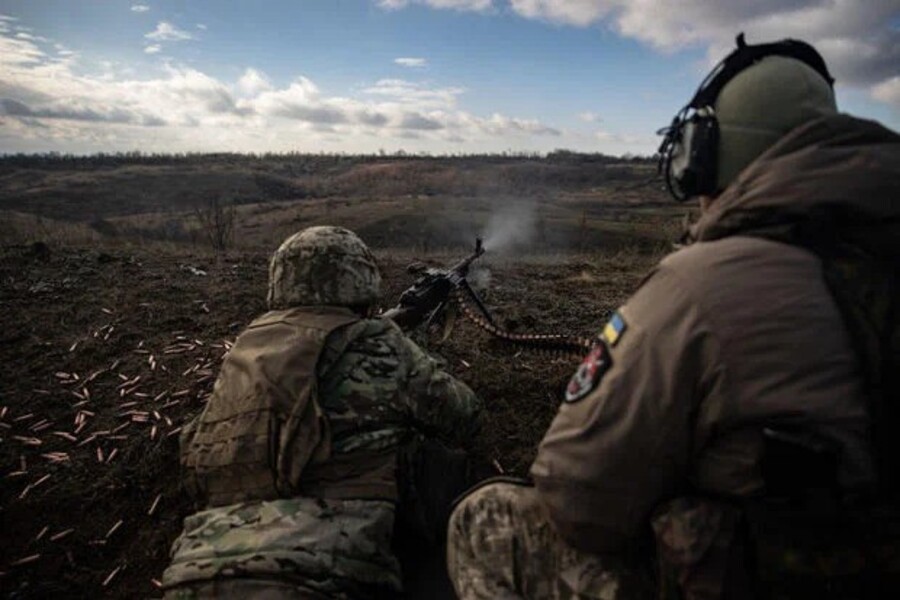Ukraine launched a counterattack in Russia’s western border region of Kursk on Sunday, intensifying the nearly three-year conflict and warning that Russia was “getting what it deserves.” The assault marks a pivotal moment as both nations maneuver for strategic advantage ahead of U.S. President-elect Donald Trump’s return to the White House on January 20.
While the extent of Ukraine’s advances in Kursk remains unclear, the operation has drawn attention to the ongoing clashes and the larger geopolitical stakes. Ukrainian officials have provided limited details about the offensive, but its timing and implications are significant. President Volodymyr Zelenskyy has also announced plans to push for enhanced air defenses during the upcoming Ramstein group meeting in Germany, emphasizing the need for stronger protections against missiles, guided bombs, and Russian aviation.
The counterattack in Kursk utilized two tanks, a dozen armored vehicles, and a demolition unit targeting Russian positions near the village of Berdin, approximately nine miles northeast of Sudzha. Russia’s defense ministry reported that its forces were actively engaged in efforts to repel the assault, though pro-Kremlin military bloggers acknowledged that the Russian army was under significant pressure.
“The main events of the next attempted offensive by the Ukrainian army are still ahead of us,” stated the influential pro-Russian Telegram channel Rybar. Ukrainian officials, however, chose to keep a low profile on operational details. Ukrainian MP Oleksiy Goncharenko urged discretion, emphasizing the importance of withholding information until the operation concludes. Meanwhile, Ukrainian presidential chief of staff Andriy Yermak expressed confidence in the counteroffensive, declaring that “Russia is getting what it deserves.”
The renewed hostilities in Kursk follow earlier gains by Ukraine in the region last August when Kyiv seized dozens of villages shortly after launching its incursion. However, those advances stalled as Russia reinforced its positions with troops, including thousands sent by its ally North Korea. According to reports, Ukraine currently controls around 300 square miles of the Kursk region, though its progress has been limited by Moscow’s robust defense efforts.
The broader conflict remains dynamic, with both sides exchanging attacks since the beginning of the year. On Sunday alone, Russia claimed to have intercepted dozens of Ukrainian drones in a barrage that damaged homes and triggered widespread air alerts. Ukrainian officials, in turn, accused Moscow of firing 103 drones into Ukrainian territory. The scale and frequency of these attacks underscore the volatility of the situation and the human toll of the ongoing war.
As the conflict escalates, Zelenskyy’s focus on securing additional air defense systems reflects Ukraine’s strategic priorities. The Ramstein group meeting, which includes representatives from numerous allied nations, offers an opportunity for Kyiv to strengthen its defenses. Zelenskyy’s appeals to partner countries highlight the urgency of addressing gaps in Ukraine’s capabilities, particularly in the face of evolving threats from Russian missiles and aerial attacks.
The meeting, which will also feature U.S. Defense Secretary Lloyd J. Austin, was originally scheduled for October but was postponed due to Hurricane Milton. In its final weeks, the Biden administration is pushing to deliver as much military aid as possible to Ukraine, underscoring its commitment to supporting Kyiv in the face of Russian aggression.
The conflict’s impact extends beyond the battlefield, disrupting civilian life and creating broader geopolitical challenges. On Sunday, four Russian airports temporarily suspended traffic for safety reasons, forcing at least eight planes to divert course, according to Russia’s civil aviation authority. These disruptions highlight the far-reaching consequences of the war and the precariousness of the current situation.
As Ukraine intensifies its counteroffensive and seeks increased international support, the stakes remain high. Zelenskyy’s efforts to rally allies and bolster Ukraine’s defenses are critical to the nation’s resilience. Meanwhile, both sides continue to brace for further escalation, with the conflict showing no signs of abating. The coming weeks will be pivotal in shaping the trajectory of the war and the prospects for resolution.

